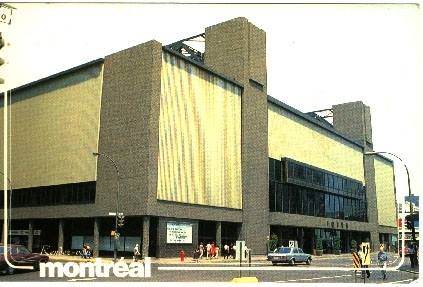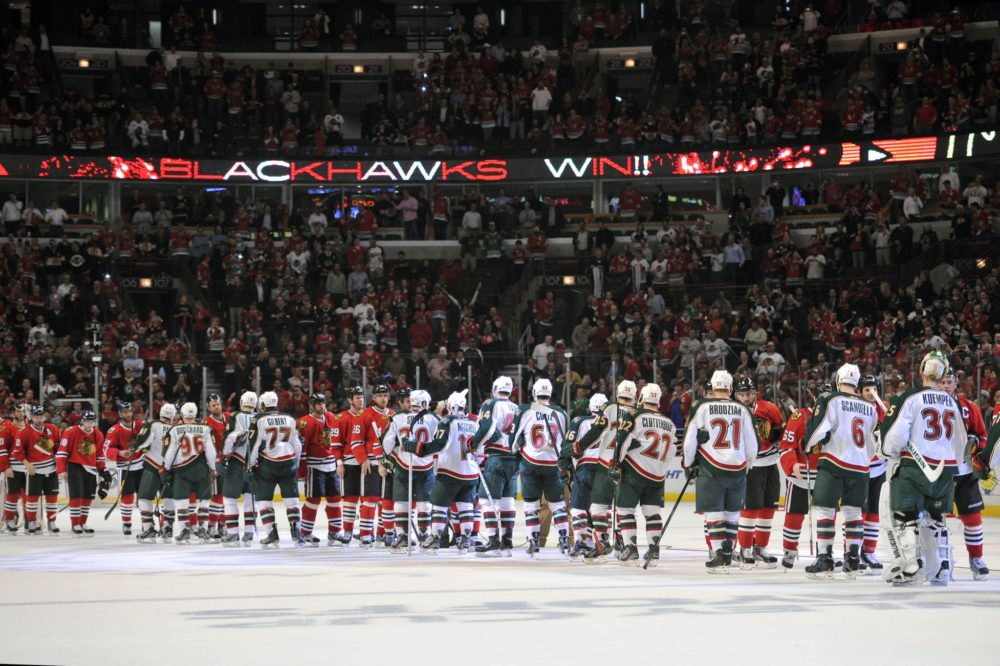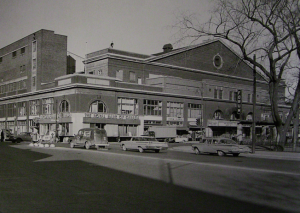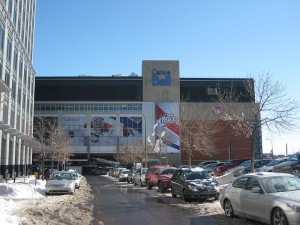Hockey is an emotional game. A game can turn on a dime from momentum swings caused by a bruising body check, a great save or even a passionate chant from the crowd. Games are determined by the final tally written on the scoreboard but ultimately, games are won and lost by the sum of all of the little victories that add up to that end result. Every little thing can and does make a difference. And that includes the overall arena experience of a team’s home games.

Last year when Geoff Molson turned the page after releasing Mr. Pierre Gauthier from his managerial duties with the Montreal Canadiens, he stated his desire to usher in a new, championship era for his once-proud franchise: Everyone in this organization, including our players, expected better. Our fans care deeply about our team and want nothing more than a winning team, one that follows in the tradition of our storied past. This season did not deliver on those expectations. Our fans can trust that ownership will accept nothing less than a winning culture in this organization. — Geoff Molson
Now one season removed from stating these intentions, Molson’s Canadiens have indeed taken their first baby steps in this direction. From 15th to 2nd overall in the Eastern Conference is an accomplishment that should not be minimized. Making the playoffs and giving their young players a taste of playoff hockey is a rite of passage that had to be experienced. Losing to the Ottawa Senators in the first round hurt, but it’s true that all great teams need to learn how to lose first in order to win. At least that’s the positive spin after losing, right!?
Geoff Molson made the right decision in bringing on a savvy upstart Montrealer like GM Marc Bergevin. Bergevin surrounded himself with a smart managerial team and coaching staff led by Michel Therrien. Now it’s time for Molson to turn his attention to some of the other small but important aspects that once made his franchise great: the complete at-home winning experience.
The Montreal Forum Was a Tough Place to Play
Home ice advantage is just that: an advantage for the home team. But why is playing at home an advantage? Well, the crowd gets behind their team; the beer is to their liking; they sing and cheer for their hometown heroes; this creates bursts of energy in their heroes; the ice and rink nuances are known by the players; they get to sleep in their own beds; the visitors spend their night before games at Chez Parée hotel bars, etc.
The rink itself can be a determining factor. In the old days of great hockey stadiums, the Blackhawks’ Chicago Stadium was known to be the loudest in the league. It completely rocked. And now, to nobody’s surprise, their new arena is also one of if not the loudest in the league. It rocks too.

The venerable Montreal Forum used to psyche out opposing teams the second they entered the building. There was something special that emanated from that edifice. That… yes why not… that je ne sais quoi described as the “ghosts of the old Forum.” The “ghosts of the old Forum” eh? Maybe it should be the “winning ghosts of the old Forum.” Because them ghosts — they carried a lot of cups. Total number of Stanley Cups hoisted by the Canadiens at the Bell Centre?
Zero.
The Canadiens had the advantage. The home ice advantage. From the roar of the crowd chanting “Go Habs Go!” at all the right times — especially when the team was down on the scoreboard — to an emotional singing of the national anthems, the Canadiens had a leg up on their opponents when playing at the Montreal Forum. Upon his hiring, Michel Therrien said he wanted the Canadiens to be a tough team to play against. He is well on his way to making this a reality. Great. Love it. But now it’s time to take things to the next level: it’s time to make the Molson Centre a tough place to play for visiting teams.
You can pass the flame, the torch, whatever incendiary device of your choosing around all you like. What I want is the Stanley Cup passed around the Bell Centre ice and the crowd singing “Na Na Na Naa — Na Na Na Naa — Hey! Heyyy! GOODBYE!!!!!!!!!!!!
The Habs had the Best of Everything
Back in the eighties the Canadiens were still considered to be one of the top teams in the NHL, even if their last dynasty where they won four cups in a row was already in the rear-view mirror and the New York Islanders were busy growing playoff beards on the way to four straight of their own. Winning in the NHL, whether it’s today or in days gone by, requires a balanced team of talent, character and depth. You need terrific and timely goaltending. And you need a coach who can pull it all together to get the most from his players. Scotty Bowman had that ability. Players didn’t necessarily like the man, but they liked the results. Let’s just say they weren’t inviting him over for dinner or going for drinks with him after the game like it was with Don Cherry when he coached the Bruins.

Now many could argue that even a chump guy like Don Cherry could have won in Montreal with the teams Montreal GM Sam Pollock put together in the late seventies. They arguably had the best defensemen in the league led by the “Big Three” (Robinson, Savard and Lapointe); the best goaltender (Dryden); the best sniper (Lafleur); the best two-way forward (Lemaire); and the best defensive forward (Gainey). Bowman was the best coach in the league (yes, better than Cherry or Arbour) and Pollock was the best GM. The key word here is “best.” The Canadiens had da best. Of everything. Forget about the players. They also had the best rink announcer (Claude Mouton), the best radio/television announcing team (Danny Gallivan & Dick Irvin), the best anthem singer (Roger Doucet) and the best crowds. And on their way out, teams would be serenaded by “Na Na Na Naa, Hey Hey Heyyy! GOODBYE!!!” And that was that.
The Canadiens had the best experience:
How on earth could a visiting team win in Montreal when Roger Doucet was the man at the microphone!?
It didn’t happen very often.
Roger Doucet had the ability to give the Montreal crowd goosebumps when he sung the National Anthem. Now I may be biased because I grew up on the guy, but others like “Sports Illustrated” writer Paul Zimmerman also took notice writing back in 2004 that he used to love covering Canadiens games because “…people would cry when he finished that song. And it never ran longer than 47 or 48 seconds.”
Now nothing against current anthem chanteur Charles Prévost Linton, but does he create that kind of reaction among Habs faithful before puck drop!? The guy is a good singer, sure. But he’s a bit of a dud too, no?
The Canadiens need to get a singer who not only pumps up the team and the crowd, but somehow psyches out the opposing team at the same time. That’s what Roger Doucet used to do. It’s what the late Kate Smith did for the Philadelphia Flyers. Now there’s an idea!? The Flyers like to play a recording of Smith on the scoreboard singing “God Bless America” during the playoffs and Lauren Hart, their current anthem singer, performs a duet with her. It has the desired effect.
Hey Heyyy Goodbye To Olé Olé Olé
In 1996 when the Bell Centre (née Molson Centre) opened its doors, the torch was passed to a new era. Maurice Richard, emblem for all of the franchise’s past glories, touched centre ice with the flame and the deal was done. A new era was underway.

But something was lost. The ghosts of the old Forum apparently couldn’t find their way down Ste. Catherine St. to their new home. Maybe they couldn’t afford the tickets. But whatever the reason, the experience of attending a Montreal home game changed. The audiences changed. Now opposing teams actually like playing in Montreal. They are the ones who get pumped up, instead of being deflated.
Somewhere along the line, Montreal audiences adopted the European soccer anthem “Olé Olé Olé” which is fine. But I say it’s time to give the boot to “Olé Olé Olé” and give it a worthy sendoff. So all together now:
Na Na Na Naa — Na Na Na Naa — Hey Hey Heyyy! GOODBYE!!!!
“Olé Olé Olé” is a soccer chant folks!! Now I know, there are many who like it. It’s fun to sing after goals. But these are people who never had a taste of the winning years. Many of Montreal’s current fans don’t even remember the last cup from ’93.
Though I remember the Lafleur-powered dynasty of the late seventies, the first Stanley Cup championship that I could truly call my own was the ’86 championship, where young upstarts like Patrick Roy, Claude Lemieux and Stéphane Richer combined with a seasoned group of veterans like Mats Naslund, Bobby Smith and Ryan Walter to bring the cup home. It seemed like forever since the Habs had won it all but in reality it was only seven seasons. Man were we spoiled. Today if a team wins two cups in seven years it’s practically a dynasty.
Rightly so, Habs fans were super-excited and after the usual embarrassing riots downtown, Montreal celebrated its championship with a cup parade “along the usual route” with lots of singing. No “Olé Olé Olé” here (wait until the end of this clip as they go to commercial):
As it turns out, I’m not alone in this. After polling my twitter followers this week, I was somewhat surprised by the instant reaction this tweet received, which tells me a lot of folks feel the same way:
#habs fans should lose OLE OLE OLE chant for home games and go back to tried tested and true Na Na Na Na Hey Hey Hey Goodbye !! Yes? No?
— HabsFaninLeafLand (@HabsFanLeafLand) May 28, 2013
The majority of responders agreed that “Olé Olé Olé” should get the boot in favour of the tried, tested and true “Goodbye!” song. Some pointed out that “Olé Olé Olé” is reserved for goals scored by the home side and that “Goodbye!” is for when the game is won; others mentioned that bringing “Goodbye!” back could rattle a few separatist sabres.
@habsfanleafland They are NOT the same chant.Ole is more equivalent to Go Habs Go while Na Na Na is the victory song.
— Ben Kerr (@LastWordBKerr) May 28, 2013
@habsfanleafland ole ole ole no. Na na na na yes.
@habsfanleafland ole ole ole no. Na na na na yes.
— petit cake shop (@petitcakeshop) May 28, 2013
The fact is, “Go Habs Go!” is the chant that should be used throughout the games, immediately after a goal is scored but even more importantly, as I mentioned earlier, when the team is down and needs a lift. Then, and only when victory is assured, the crowd is to give the losing visiting team the boot with a loud and passionate “Goodbye!” chant.
Is that so hard!?
Follow Ari Grief on Facebook and twitter under code name @HabsFanLeafLand where he will gladly answer all of your tweets, indicate how many times he cried during the writing of this article and where he enjoys ranting, raving, calling out Charles Prévost Linton and drinking imported beer.